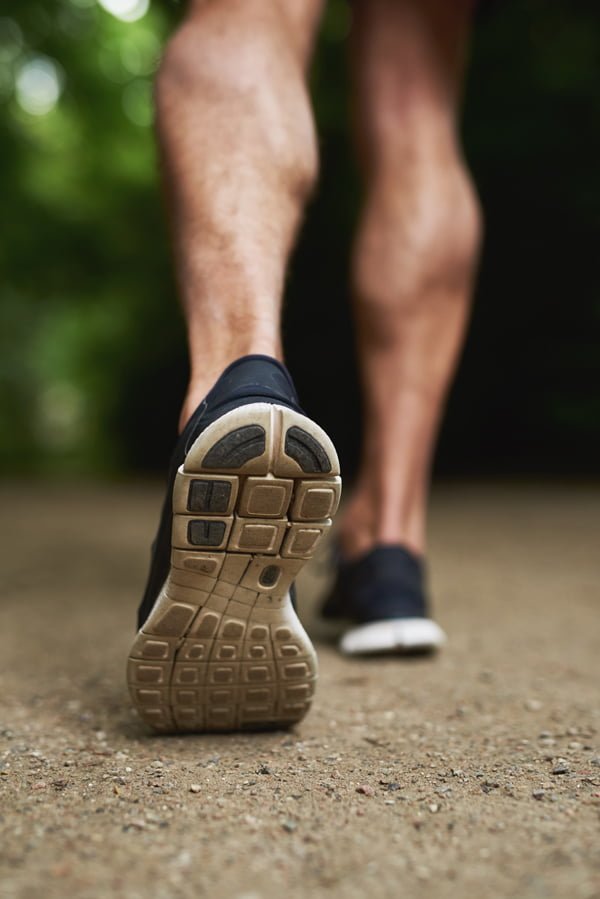Calves are definitely my weakest link, and I just know this whole article is going to make me set the wheels in motion to actually get some growth happening. I’m not sure if you have read this, but Arnold lacked calf development, and he forced himself to train in the gym with his pants cut off from the knee down. His training buddies used to tease him endlessly – fuelling the fire for him to finally enhance those muscles. With some hard work and smashing the reps out, he made huge progress. We all don’t have to go to those extremes, but to grow your calves, you need to get serious about training them enough that perhaps you may have a limp in your walk for a while…
5 ways to enhance stubborn calves back into growth
- Train the soleus more frequently than the gastrocnemius.
Slow twitch fibre composition of the soleus enables them to recover faster than fast twitch gastrocnemius. Therefore, the soleus can be trained a lot more frequently – even daily. For the gastrocnemius, train this muscle only twice per week for more growth. - Try out some single leg calf raises with a dumbbell or weighted plate.
This is a very effective way to train your calf’s. Make sure you hold the dumbbell or plate on the same side as the calf you are working on and at the bottom position, squeeze the glutes, Squeezing the glutes will promote even more growth by stretching the fascia. - Train the gastrocnemius with lower reps.
Our calves contain two major muscles – the gastrocnemius (upper) and the soleus (lower). The gastrocnemius contains more fast twitch muscle fibres, whilst the soleus has predominantly slow twitch. Fast twitch fibres respond best to low reps and heavy weight, producing higher level of muscle tension, whilst soleus being slow twitch, responds best to higher reps and lighter weights. The soleus also requires longer exposures to muscle tension.
How to activate both muscles: Start with straight leg raises, targeting the gastrocnemius with sets of 8–12 reps, then perform raises with legs bent to target the soleus performing 15–25 reps. Keep in mind the tempo influences the repetition and calf exercises are performed with short ranges of motion, therefore, time under tension is relatively short. Keep this in mind and try as much as you can to extent that tension time. - Stretch the calves.
Tight calves restrict the range of motion you can perform and can inhibit in muscle growth (not to mention, cause injury). The best way to stretch the calves is to perform a few sets in which you rest at the bottom of the calf raises- letting resistance do the work for you. Hold that position for 15 seconds. - Use pulses for more tension.
This is a good way to get a lot more tension on the calf muscles. Perform a pulse at the top of the movement – very quickly, then using correct tempo on the downward motion. Do this for as many repetitions as you can, both straight and bent leg calf raises. Perform these with your own body weight to failure.
Thank you for asking this question, as I’ve let my calf development slip, and need a good kick up the backside to start making things happen again. Hopefully these tips with help you to enhance your calf development. All these tips and tricks are taken from my mentor (strength sensei) who has since passed away and left many of his valuable training protocols behind for all of us to try and test with the intention of creating the best body composition results. If you appreciate this, why not join me via my website or join me on fb and insta social. Please feel free to upvote this answer if it has been useful in some way to you.
Work out effectively, affordably and flexibly with an online coach
Get your custom-made training and nutrition program integrated with Intermittent fasting.
Fast track your results now! click below:

